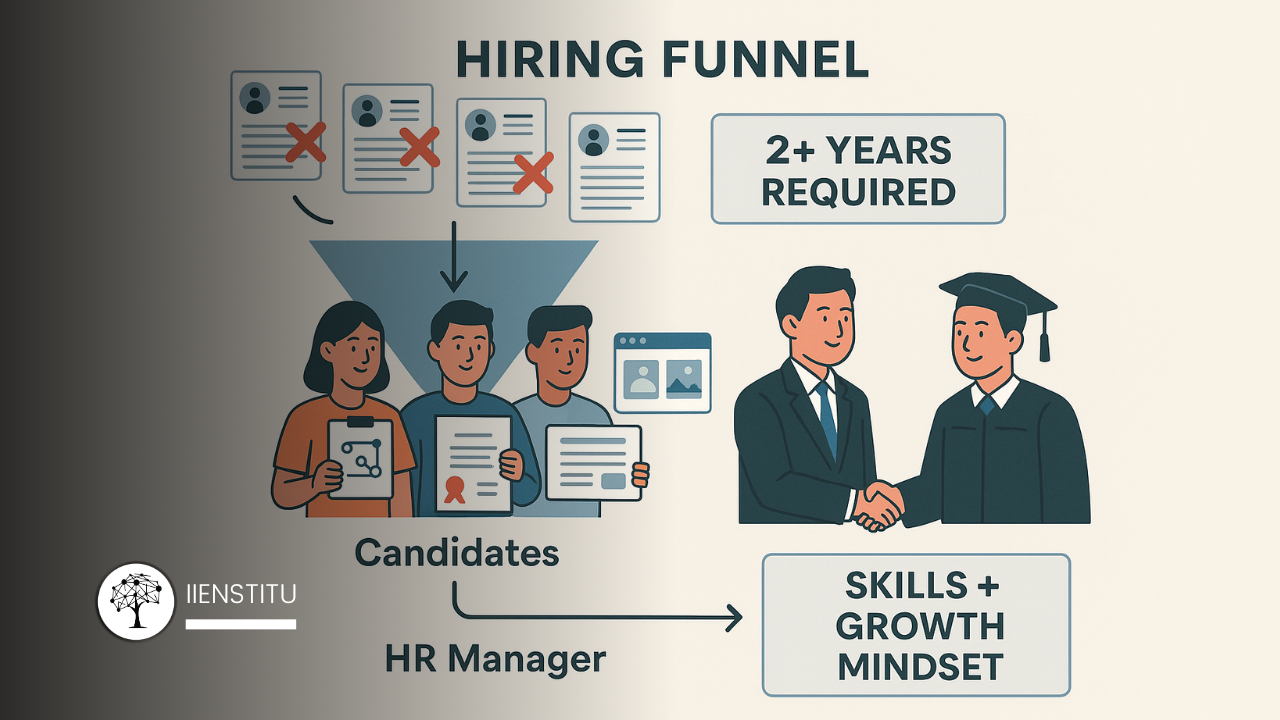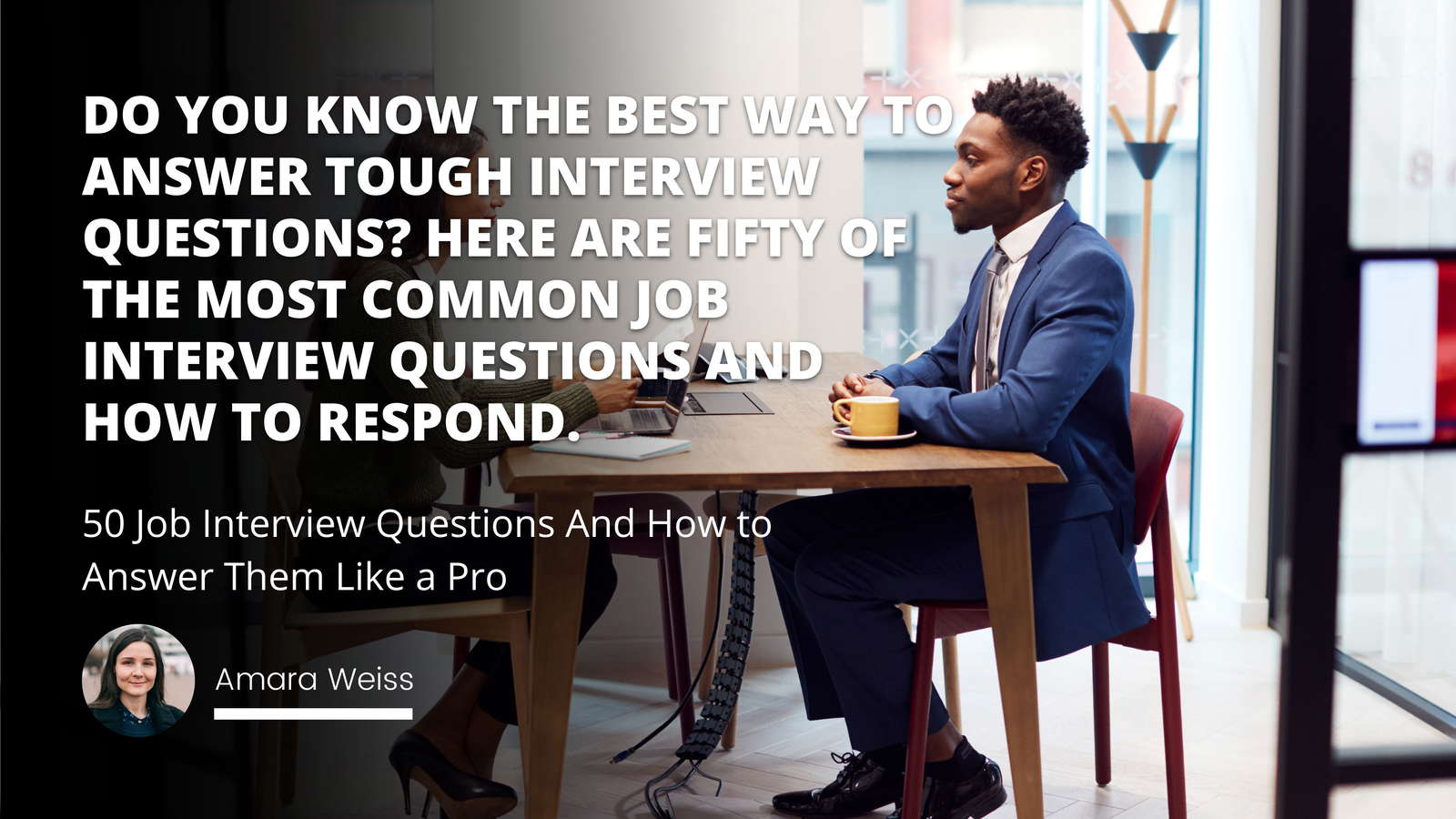
If you’ve ever posted an “entry-level” job and demanded 2+ years of experience, congratulations—you’ve met the paradox at the heart of modern hiring. Experience still matters, but it’s no longer the only—or even the strongest—signal of future performance. Curiosity, learning agility, creative problem-solving, and drive often predict long-term impact better than a résumé full of past job titles. This article reframes hiring from experience hunting to talent scouting. You’ll get a practical, skills-first playbook to evaluate potential, give new graduates a fair shot, and build teams that move faster because they learn faster.
Why Experience Alone Is a Blunt Instrument
Experience is a lagging indicator. It tells you where someone has been, not where they can go. Two candidates can each claim “two years’ experience,” yet one simply completed assigned tasks while the other built projects after hours, took courses, and shipped ideas. Years elapsed are not the same as capability accrued.
The Hidden Bias of “Years”
Inflated requirements block capable early-career talent from even applying.
Overfitting to the past: Job descriptions that mirror yesterday’s tasks can’t anticipate tomorrow’s problems.
Missed innovators: People who learn quickly, self-direct, and iterate tend to outperform as complexity grows.
Replace Years with Evidence
Shift from “How long?” to “Show me.” Ask for proof of skill—portfolios, case walk-throughs, micro-projects—rather than a timeline of employment. That’s how you separate activity from mastery.
A Skills-First Blueprint for Hiring New Graduates
You don’t need to lower the bar for entry-level hires—you need to change the bar. Below is a step-by-step process you can apply in any function.
1) Re-write the Job Description
Replace “2+ years of X” with outcomes and competencies:
Outcomes: “Within 90 days, own feature QA for product Y and reduce escaped bugs by 20%.”
Competencies: “Breaks vague problems into steps, communicates trade-offs, seeks feedback, documents decisions.”
Add Signals of Potential you will accept in lieu of experience:
Open-source commits, personal apps, hackathons
Capstone projects with demo links
Coursework with applied artifacts (not just grades)
Volunteer leadership or community org work
Certifications or micro-credentials relevant to the role
2) Design an Evidence-Rich Application
Ask candidates to submit one artifact:
Engineers: GitHub repo + short README explaining decisions
Marketers: a one-page campaign brief for an example product
Analysts: a small dataset exploration with findings
Designers: 2–3 screenshots + a 200-word rationale
Make it time-boxed (e.g., artifacts already created or a 45-minute structured prompt) to avoid unpaid labor.
3) Replace Trivia Screens with Skill Screens
Dump generic phone screens that recap the résumé. Use a structured, 30-minute work sample:
Provide a real but bounded problem.
Evaluate with a rubric: problem framing, choices & trade-offs, clarity, learning mindset.
4) Use Structured Interviews with Rubrics
Create 4–6 behavioral questions mapped to core competencies. For each, define what “poor,” “good,” and “great” look like. Example for “Learning Agility”:
Prompt: “Tell me about a time you taught yourself a skill fast to deliver something.”
Great answer indicators: sets learning goal, sources, iteration, measurable outcome, reflection on what they’d do differently.
5) Calibrate on Potential, Not Polish
Early-career candidates may be nervous. Look past polished delivery and focus on thinking process:
Do they ask clarifying questions?
Do they test assumptions?
Do they synthesize feedback into their solution?
6) Offer a Fair Trial: Paid Micro-Internships
If you’re torn, run a paid, scoped micro-internship (2–4 weeks, part-time) with clear deliverables. This lowers risk on both sides and surfaces growth trajectory.
7) Close With Development, Not Perks
Top potential cares about coaching, feedback loops, and growth paths. Describe your 30/60/90 onboarding, mentorship pairing, and learning resources (courses, budgets, shadowing). You’ll convert better candidates—and keep them.
The Talent-Scout Mindset Inside HR
HR teams often reject promising graduates because their workflow is optimized for filtering, not finding. To become a talent scout, you need new operating habits.
Scorecards > Gut Feel
Define a role scorecard that ranks competencies by weight (e.g., Problem Solving 30%, Collaboration 25%, Communication 20%, Technical Basics 25%). Capture evidence snippets during interviews. Final decisions reference the scorecard, not charisma.
“Vision and Values” Checks
Experience proves someone can do a task; vision proves they’ll choose the right tasks tomorrow. Include questions like:
“What’s a contrarian view you hold about our industry and why?”
“Show a time you changed your mind after new data.”
“What would you build in your first 30 days and how would you measure success?”
These reveal systems thinking, curiosity, and humility—stronger leading indicators than years of tenure.
Build a Repeatable Early-Talent Funnel
Partner with universities and communities (clubs, bootcamps, meetups).
Run open challenges quarterly with light-lift prompts; share feedback to all participants to build your brand.
Maintain a talent CRM tagging candidates by demonstrated skills, not just “applied / rejected.”
Calibrate Managers on “Speed of Learning”
Teach hiring managers to ask: “If this person joined tomorrow, how quickly would they become independently effective?” Have them justify with evidence from the artifact and work sample.
Onboarding That Compounds
On day one, provide:
A 90-day roadmap with outcomes and check-ins
A buddy + mentor (two different people)
A feedback rhythm (weekly tactical + monthly growth conversations)
Access to learning resources (internal docs + curated courses)
When the environment accelerates learning, lack of prior experience stops being a blocker.
Practical Tools, Prompts, and Rubrics You Can Copy
Make it easy for your team to shift today.
Job Description Snippet (Skills-First)
You will: ship small features end-to-end; write clear PRs; instrument analytics; present findings.
You are: comfortable with ambiguity; break problems into steps; communicate trade-offs; ask for feedback early.
Evidence we’ll accept: GitHub links, course projects, portfolio pieces, certificates, volunteer leadership, Kaggle entries, hackathon demos.
Nice to have (not required): prior internships, freelance gigs.
Artifact Prompt (45 minutes)
“Pick a personal project. In 200–300 words: (1) goal, (2) constraints, (3) your decision tree, (4) what you’d redo with 2 extra days. Include a link or screenshot.”
Work-Sample Exercise (30 minutes live)
“Here’s a vague problem: our sign-up conversion dropped 15% last month. Walk us through how you’d triage, what data you’d pull, and two cheap experiments. You don’t need the ‘right’ answer; show your reasoning path.”
Interview Rubric Snapshot
Problem Framing (0–3): from restating symptoms → identifying root questions
Decision Making (0–3): articulates options + trade-offs
Learning Agility (0–3): self-teaches, iterates based on feedback
Communication (0–3): concise, structured, asks clarifying questions
Collaboration (0–3): invites input, negotiates constraints
Document short evidence quotes that justify each score.
Offer & Growth Plan Template
30 days: ship first scoped task; create “user manual” of how you work; weekly mentor sessions
60 days: own a small domain; propose process improvement
90 days: present a retrospective with metrics; mentor a newer hire on one micro-skill
Short Checklist (for quick implementation)
Strip “years of experience” from your next job ad; replace with 3–5 outcomes and a competency list.
Ask each applicant for one artifact (repo, brief, case, or prototype).
Run a 30-minute live work sample scored with a rubric.
Add vision questions and learning-agility probes to interviews.
Use a scorecard with weighted competencies to decide, not gut feel.
Pilot a paid micro-internship for finalists who lack proof yet show promise.
Ship a 90-day onboarding plan with mentor + buddy + weekly feedback.
Track outcomes: time-to-independence, manager satisfaction, and artifact quality—not just time-to-hire.
When you stop treating experience as a binary gate and start treating evidence as your north star, you unlock a wider, more diverse, and ultimately higher-ceiling talent pool. Becoming a talent scout doesn’t mean ignoring experience—it means contextualizing it. Hire for slope, not just intercept, and your team’s capabilities will compound quarter after quarter.
Frequently Asked Questions
Why is hiring for potential more effective than hiring for experience?
Hiring for potential focuses on learning agility, motivation, and transferable skills, which are stronger predictors of long-term success than years of past experience. While experience shows what someone has done, potential reveals what they can do in the future. For example, a motivated new graduate who actively pursues certifications, projects, and problem-solving challenges may ramp up faster and contribute fresh perspectives compared to someone with years of repetitive tasks but little growth. This makes skills-first, potential-based hiring a future-proof strategy for dynamic industries.
How can HR evaluate candidates without prior work experience?
HR can assess candidates without work history by using skills-based hiring methods:
Work samples: Small, realistic tasks that showcase problem-solving.
Portfolios and projects: GitHub repos, marketing briefs, or capstone projects.
Behavioral questions: Probing how they learn new skills, overcome challenges, and collaborate.
Certificates and online learning: Proof of self-directed growth.
These approaches reveal competencies and motivation, providing a fairer, more accurate picture of future performance than just checking for years on a résumé.
What are the benefits of skills-first hiring for new graduates and employers?
For new graduates, skills-first hiring provides a chance to demonstrate talent and motivation instead of being automatically rejected for “lack of experience.” It helps them enter the workforce faster, gain confidence, and prove themselves through real contributions.
For employers, the benefits include:
Wider talent pool: Access to motivated candidates often overlooked.
Fresh ideas & creativity: Graduates bring new perspectives and adaptability.
Long-term ROI: Hiring for growth potential builds teams that continuously evolve.
Improved employer brand: Companies known for developing young talent attract stronger applicants in the future.


